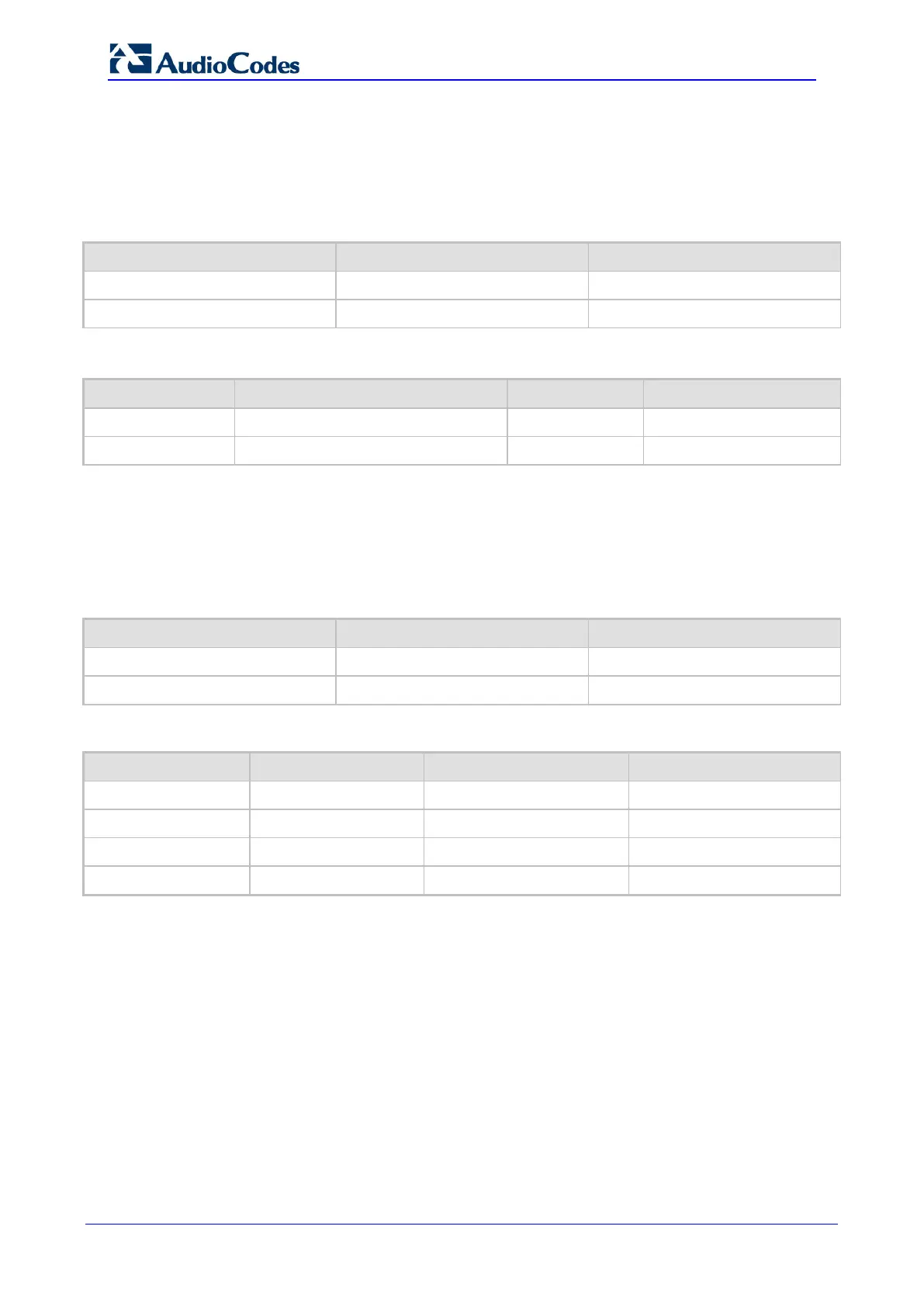User's Manual 284 Document #: LTRT-10632
Mediant 800B Gateway & E-SBC
that for one minute, Cost Groups "A" and "D" are identical, but due to the average call duration,
Cost Group "D" is cheaper. Therefore, average call duration is an important factor in determining
the cheapest routing role.
Below are a few examples of how you can implement LCR:
Example 1: This example uses two different Cost Groups for routing local calls and
international calls:
Two Cost Groups are configured as shown below:
Cost Group Connection Cost Minute Cost
1. "Local Calls" 2 1
2. "International Calls" 6 3
The Cost Groups are assigned to routing rules for local and international calls:
Routing Index Dest Phone Prefix Destination IP Cost Group ID
1 2000 x.x.x.x 1 "Local Calls"
2 00 x.x.x.x 2 "International Calls"
Example 2: This example shows how the device determines the cheapest routing rule in the
Tel-to-IP Routing table:
The 'Default Call Cost' parameter in the Routing Policy rule is configured to Lowest Cost,
meaning that if the device locates other matching routing rules (with Cost Groups assigned),
the routing rule without a Cost Group is considered the lowest cost route.
• The following Cost Groups are configured:
Cost Group Connection Cost Minute Cost
1. "A" 2 1
2. "B" 6 3
• The Cost Groups are assigned to routing rules:
Routing Index Dest Phone Prefix Destination IP Cost Group
1 201 x.x.x.x "A'
2 201 x.x.x.x "B"
3 201 x.x.x.x 0
4 201 x.x.x.x "B"
The device calculates the optimal route in the following index order: 3, 1, 2, and then 4, due
to the following logic:
• Index 1 - Cost Group "A" has the lowest connection cost and minute cost
• Index 2 - Cost Group "B" takes precedence over Index 4 entry based on the first-
matched method rule
• Index 3 - no Cost Group is assigned, but as the 'Default Call Cost' parameter is
configured to Lowest Cost, it is selected as the cheapest route
• Index 4 - Cost Group "B" is only second-matched rule (Index 1 is the first)

